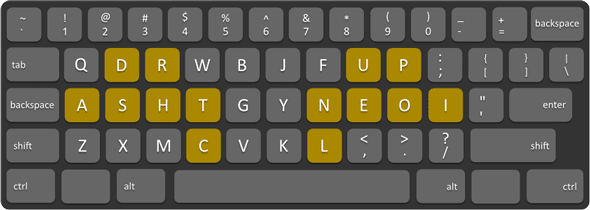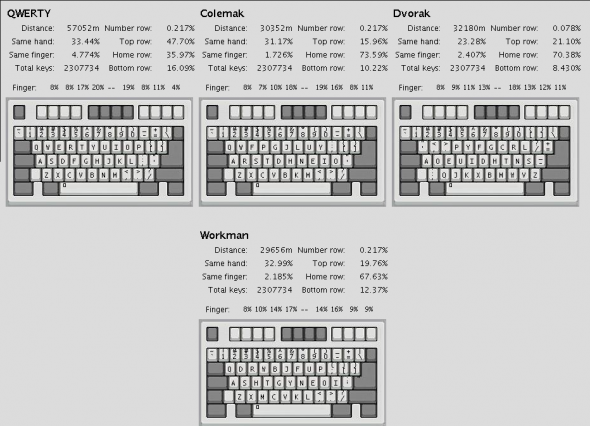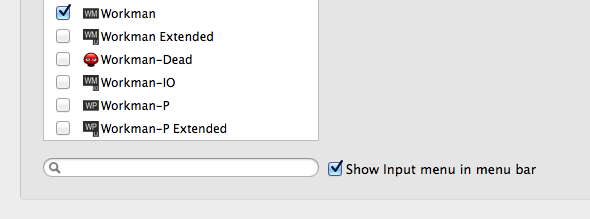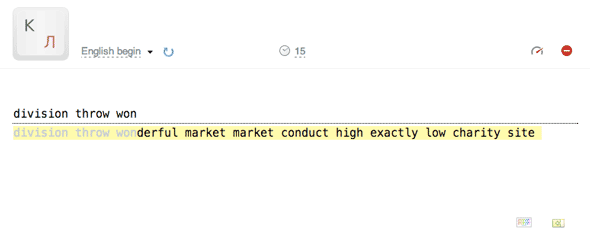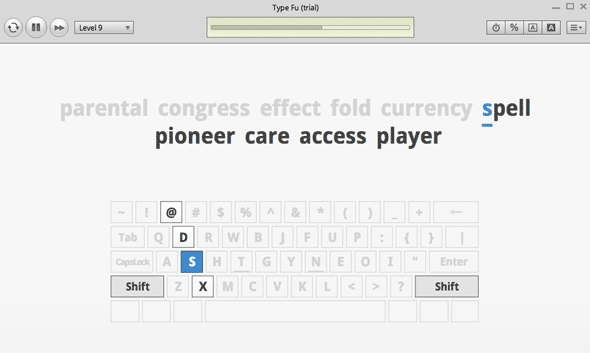Before personal computers were invented, even before they made their appearance in science-fiction literature, the Qwerty keyboard layout was designed for use on typewriters. While the design considerations were solid, Qwerty wasn't created for efficiency. Far from it. Because the typebars on a mechanical typewriter could jam when pressing close-by keys, the most used characters were instead spread out as far as possible on the keyboard.
We don't use typewriters anymore (well, most of us don't). And yet most of you will still be using Qwerty, the most popular keyboard layout in the world. But not because it's so easy to use, or even because it's the best option on the market. The main reason for Qwerty's dominion is its age.
We need to reconsider. Without those old restrictions, a keyboard layout can focus on efficiency and ease of use. It's time for change; for a keyboard layout that's fit for modern keyboards and modern computing. It's time for the Workman Layout.
Workman Layout (no longer available)
One such improved keyboard layout is called the Workman Layout. It's not the only project attempting to redesign the keyboard. Dvorak and Colemak are two other options. Erez wrote about his experiences after switching to Colemak. All of these offer quantifiable improvements over Qwerty, but Workman comes out ahead in my opinion, both in terms of efficiency and learning curve.
Like most layouts, Workman is built on a foundation of character frequencies. The most frequently used characters (in the English language) should be kept as close as possible. If your fingers are flying over the keyboard like they do with Qwerty, you know there's something wrong.
The keys highlighted in yellow are the keys you'll use most. They're also the keys that are easiest to reach. The eight keys in the home row are a no-brainer. Your flexible forefinger can easily reach back, but to get to the top row, your entire hand needs to twist or move with it. The length of your middle and ring finger makes it easy to reach up, but unwieldy the other way around. And your pinky... well, your pinky is a pretty useless finger. Sorry, pinky.
What Efficiency Looks Like
It's all good and well talking about finger frequency and dexterity, but a good idea only gets you halfway. Let's take a closer look at the results. Trial by fire, with a little help from Don Quixote de la Mancha.
It's a good read, but more importantly, it's a big-ass book. If we were to copy the story (English edition) on Qwerty and Workman? It's a silly idea, and a critical neglect of OCR software, but an interesting thought experiment regardless. Both computers would end up typing around 2,307,734 characters. (To give you an idea what that looks like, Goodreads tells me the Penguin Classics paperback is a daunting 1000 pages.)
Over the course of those 2.3 million characters, your fingers would dance the equivalent of 57,052 metres (that's 187,178 foot) on your keyboard. On the Workman layout that distance is nearly cut in half at 29,656 metres (almost 97,296.6 foot). Almost half! This reduction in distance is a result of the most frequented keys being (a lot) easier to reach. But it's not only distance that's reduced. You'll also save a lot of time in the process.
You can compare the performance using other literary works (no longer available). Huckleberry Finn, Tom Sawyer, War of the Worlds, Moby Dick, Sherlock Holmes and even The Republic by Plato all show similar results.
Workman and Colemak
In the tests above, Colemak and Dvorak offer great improvements over Qwerty, but Workman still comes out ahead. What has Workman to offer over Colemak?
Like Colemak, Workman focuses on putting the frequently used keys in easy to reach places. However, Workman works harder to avoid the middle two rows, minimising lateral and diagonal movement. In general, Workman doesn't just look at the distance between a key and the home row. It also brings the length and dexterity of different fingers into account and tries to balance utilisation of both hands.
For more information, look at the Pros and Cons on the Workman website (no longer available).
Download and Install
The Workman layout has been submitted to several big operating systems for approval. For now, you can install it manually on your computer. Using Workman is free, and you can use it on your Mac OS X, Windows, or Linux desktop and a lot of other systems.
Download the ZIP that's provided by deekayen and follow the instructions included for your operating system to install the keyboard layout.
Depending on your operating system, there might be a few flavours of the Workman layout available. The default layout is Workman, plain and simple. Workman Extended adds internationalization support, with more accented letters. Workman-P swaps the numeric and special symbols on the top row, so you don't have to press shift to reach those symbols.
For Mac OS X, there's extensive documentation with screenshots available in the Readme on Github.
Practice, Practice, Practice
It takes some time to get used to a new keyboard layout. That's to be expected; you've probably been using Qwerty or a similar keyboard layout for a long time. According to a MakeUseOf poll on new keyboard layouts, the learning curve is what scares most people. Don't worry, with the right tools, it's easier to pick up than you might think.
Klava.org is a great place to get started. It's free to use and you can jump in right away. It's a good option if you want to switch cold turkey, because it utilises all the keys on the keyboard. You can start with simple, repetitive words and work your way up to bigger paragraphs of text. It even has a programmer mode, where you can try your hand at C(++), Python, PHP, and other languages.
A more gentle approach is offered by Type Fu. It's a Chrome app and Mac application ($9.99) that you can try for free. You start at level 1, where you only have to use the home keys. When you reach 30 words per minute a few times in a row, Type Fu cranks it up a notch, all the way up to level 9.
Have you ever thought of ditching Qwerty? Ever tried your hand at a different keyboard layout? Share your experiences below, or let us know how you like Workman!


